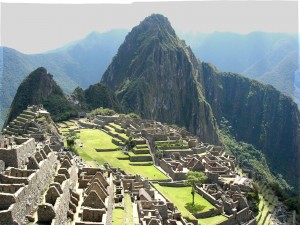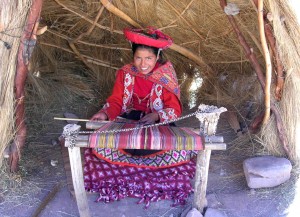 Since returning two weeks ago from the Reality Tour to Peru, scores of friends, family, coworkers and acquaintances have asked me, “So how was your trip?” and for the first time ever upon returning from a vacation, I stumbled over the answer. “Great” or “we had a wonderful time” certainly did not describe the experience, nor could any other short, polite answer adequately describe a trip where we spent a majority of our time gaining an understanding of the issues of human trafficking. So after two weeks of contemplation, how would I summarize the trip? I think I have narrowed it down to three words- breathtaking, overwhelming and hopeful– each of which needs further elaboration.
Since returning two weeks ago from the Reality Tour to Peru, scores of friends, family, coworkers and acquaintances have asked me, “So how was your trip?” and for the first time ever upon returning from a vacation, I stumbled over the answer. “Great” or “we had a wonderful time” certainly did not describe the experience, nor could any other short, polite answer adequately describe a trip where we spent a majority of our time gaining an understanding of the issues of human trafficking. So after two weeks of contemplation, how would I summarize the trip? I think I have narrowed it down to three words- breathtaking, overwhelming and hopeful– each of which needs further elaboration.
While tourism and sightseeing were not the primary purpose of the tour, we did have time to visit some of the major Peruvian tourist sites- Lima, the Incan capital of Cusco, the Sacred Valley and Machu Picchu. Visiting Machu Picchu has long been a dream of mine and while I have seen hundreds of pictures of the site, nothing prepared me for the actual experience. Like experiencing the temples at Angkor Wat, the Cathedral of Notre Dame or Niagra Falls for the first time, pictures just do not prepare you for its scale and sheer beauty. So, as I stood on the top of the ridge at 7am as the sun rose over the Andes and illuminated the slopes of Huayna Picchu and the ruins lying below it, I could just stare in wonder and try to catch my breath- both literally and figuratively.
But, back to why we were really in Peru. The issue of human tracking is a problem that plagues us on a global basis, and Peru is certainly no exception. A 2006 report by Anti-Slavery International identified three primary trafficking issues in Peru: domestic labor; sexual exploitation of women and children; and forced labor (primarily, in mines in the Amazon basis).
Our on ground coordinator, Lucy Borja, is a modern day abolitionist who has fought for the rights of Peruvian street children throughout her life and provides social services and support to children through her organization, Generación (more about Generación later). Lucy provided us with her perspectives local trafficking issues, arranged for meetings for us with various other NGOs dealing with the issue, and took us to the streets of Lima one night where we were able to meet and talk to some of the girls (some as young as 13) who were caught in a life of prostitution, some forced there by pimps, others by boyfriends and others by family members.
As I listened to the stories of these girls and reflected on all we had learned, I became overwhelmed by both the sheer scope of the trafficking issue as well at its personal impact on the individuals that are caught in its grips. How can we effectively address an issue that is so vast in scope, yet also so personal?
Well, Lucy had an answer for that, as well. She shared with us what she and other likeminded individuals and organizations in Peru were doing to deal with both the victims of trafficking and their efforts at prevention. In Cusco, we met with organizations that are focused on community development in an attempt to relieve poverty in rural areas. Poverty is the issue that puts people at the most risk of traffickers as they look for a better life in the cities or work in the mines, only to find themselves caught in the grips of slavery. We also met with representatives of Yanapanakusun which provides a safe house for girls that are victims of domestic slavery, and sponsors education programs in the countryside to try to keep girls in school and out of domestic work. And in Lima, we were able to visit Lucy’s work at Generación.
 Generación operates a home that currently houses approximately 18 children that formerly lived on the streets of Lima. At the Generación house, the children receive all the support they need to build their lives-a safe place to sleep, food, clothing, access to education, and most importantly, love and support. Generación also operates Veronica’s House, which is a safe house for at-risk women and children that had been forced into prostitution, and provides vocational training so that the victims can learn skills that will allow them to find work off the streets. The day we spent at each of these locations filled me with hope that, while we may never be able to eradicate trafficking, there are things we can do and organizations that we can support that are making a difference in the areas of prevention, rescue and healing.
Generación operates a home that currently houses approximately 18 children that formerly lived on the streets of Lima. At the Generación house, the children receive all the support they need to build their lives-a safe place to sleep, food, clothing, access to education, and most importantly, love and support. Generación also operates Veronica’s House, which is a safe house for at-risk women and children that had been forced into prostitution, and provides vocational training so that the victims can learn skills that will allow them to find work off the streets. The day we spent at each of these locations filled me with hope that, while we may never be able to eradicate trafficking, there are things we can do and organizations that we can support that are making a difference in the areas of prevention, rescue and healing.

